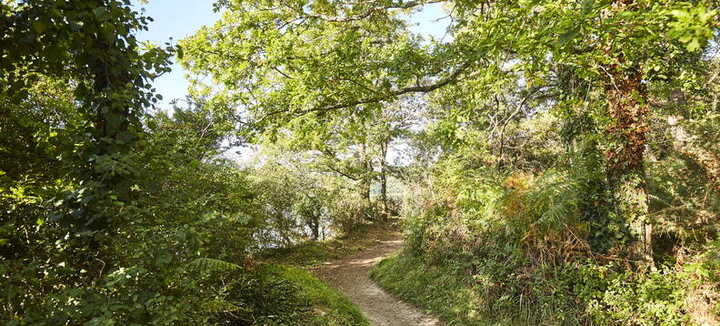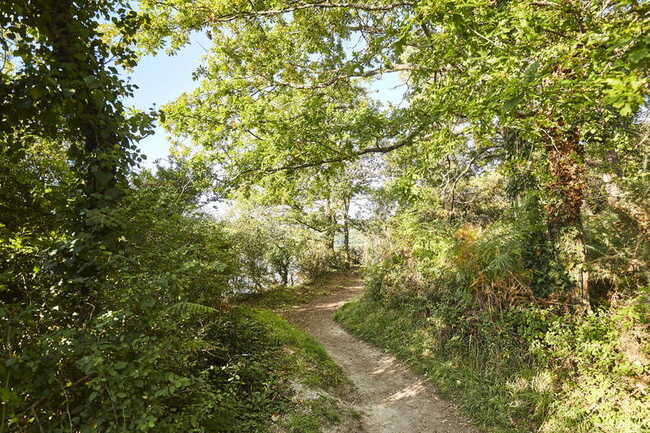
Pluneret - Tro Ar Vourc'h
Place de la Mairie
56400 Pluneret
56400 Pluneret
Features of the route
Length
1h40
Distance
7km
Place de la Mairie
56400 Pluneret
56400 Pluneret
Easy Relatively untouched by land consolidation, Pluneret boasts quality rural landscapes. Its paths are ideal for gentle travel and socializing.
Step by step :
Start: Opposite the church, take the road to Sainte-Anne d'Auray. Pass the cemetery. Opposite, turn left, walk alongside the school and follow the shaded path.
1- At the intersection, turn left. View over the Loch valley and the town of Auray.
2- At the intersection, turn left. Cross the main road, go down 50 m, follow the track. At the crossroads, turn left, cross the road and walk alongside the shopping center parking lot.
3- At the edge of the parking lot, take the left-hand path. Enter the hamlet of Kernitra (nitra = nothing).
4- Cross the road. Turn right into the housing estate. At the end, between 2 houses, enter the track. At the bottom, turn left.
5- After 100 m, cross the road towards Lanriaq. At the bend, take the left-hand track. At the top, turn left.
6- At the road, turn right, cross the road. Take the track opposite.
7- Cross the level crossing, turn left towards Le Cosquer, follow the sunken track.
8- At the crossroads, turn right. After 60 m, turn right onto the track, then left after the 2nd house, as far as the level crossing.
9- At the end of the track, turn right down the road. At the river crossing, on the right, you'll see the remains of a communal wash-house.
Focus: - Tomb of the Comtesse de Ségur. The Russian-born writer, born Sophie Rospochine, was a regular visitor to Château de Kermadio, especially towards the end of her life. She died in 1874 and is buried in the Pluneret cemetery, next to her son. - On the embankments, trees and shrubs (elder, hawthorn, blackthorn, wild pear) were planted according to need: firewood, fodder, food. They create a natural barrier for crops and livestock. - To the north of Kervingu, in a field, the Kervingu Dolmen bears witness to over 4,000 years of occupation.
Step by step :
Start: Opposite the church, take the road to Sainte-Anne d'Auray. Pass the cemetery. Opposite, turn left, walk alongside the school and follow the shaded path.
1- At the intersection, turn left. View over the Loch valley and the town of Auray.
2- At the intersection, turn left. Cross the main road, go down 50 m, follow the track. At the crossroads, turn left, cross the road and walk alongside the shopping center parking lot.
3- At the edge of the parking lot, take the left-hand path. Enter the hamlet of Kernitra (nitra = nothing).
4- Cross the road. Turn right into the housing estate. At the end, between 2 houses, enter the track. At the bottom, turn left.
5- After 100 m, cross the road towards Lanriaq. At the bend, take the left-hand track. At the top, turn left.
6- At the road, turn right, cross the road. Take the track opposite.
7- Cross the level crossing, turn left towards Le Cosquer, follow the sunken track.
8- At the crossroads, turn right. After 60 m, turn right onto the track, then left after the 2nd house, as far as the level crossing.
9- At the end of the track, turn right down the road. At the river crossing, on the right, you'll see the remains of a communal wash-house.
Focus: - Tomb of the Comtesse de Ségur. The Russian-born writer, born Sophie Rospochine, was a regular visitor to Château de Kermadio, especially towards the end of her life. She died in 1874 and is buried in the Pluneret cemetery, next to her son. - On the embankments, trees and shrubs (elder, hawthorn, blackthorn, wild pear) were planted according to need: firewood, fodder, food. They create a natural barrier for crops and livestock. - To the north of Kervingu, in a field, the Kervingu Dolmen bears witness to over 4,000 years of occupation.

